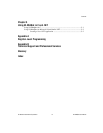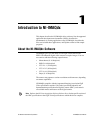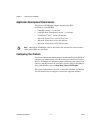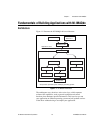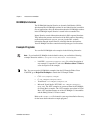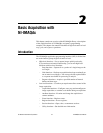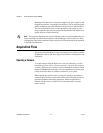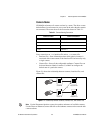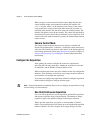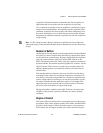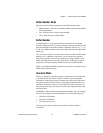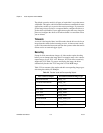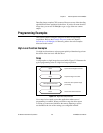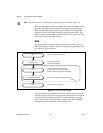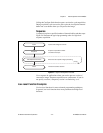
Chapter 2 Basic Acquisition with NI-IMAQdx
NI-IMAQdx User Manual 2-4 ni.com
When you open a camera session with the Camera Open function, the
camera with the unique serial number described by the interface file
cam
n
.iid opens, where
n
is the reference to the camera. If the camera
is not present and a camera of the same make and model is present, as
described in the interface file, the driver opens the available camera. The
interface file updates to use the new camera. The camera file described by
the interface file opens, and all the user attributes are set in the driver. If no
camera of the same make and model is present, the Camera Open function
returns an error.
Camera Control Mode
The camera control mode parameter has two options: controller and
listener. The default option—controller—controls the camera and receives
video data. The listener only receives video data. Use the listener option in
broadcasting applications. Refer to the Broadcasting section of Chapter 3,
Advanced Programming with NI-IMAQdx, for more information about
broadcasting.
Configure the Acquisition
After opening the camera, configure the camera for acquisition by
specifying the following parameters: whether the acquisition is one-shot
or continuous, and the number of internal buffers to use.
While configuring the camera, the driver validates all the user-configurable
attributes. If any attributes are invalid or out of range, the driver returns an
error and does not configure the acquisition.
If you want to reconfigure the acquisition, call the Unconfigure Acquisition
function before calling the Configure function again.
Note National Instruments recommends that you do not configure an acquisition in a loop
because doing so is time-intensive.
One-Shot/Continuous Acquisition
Use a one-shot acquisition to start an acquisition, perform the acquisition,
and stop the acquisition using a single function. The number of images
acquired is equal to the number of images in the images collection.
With a one-shot acquisition, you specify a certain number of internal
buffers. The camera transfers each image up to and including the specified
number of buffers. The driver acquires every image during a one-shot



